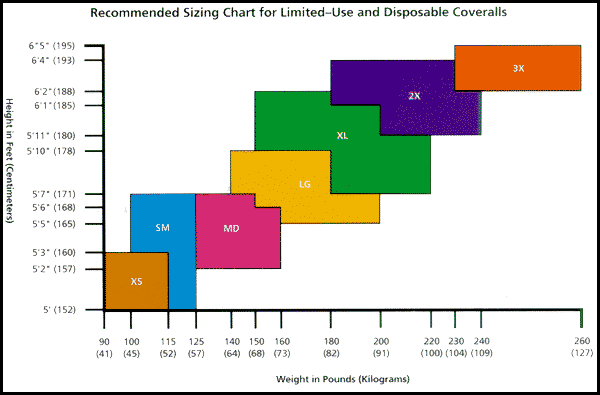HOW DO I SIZE DISPOSABLE CLOTHING/SUITS?
WHAT COVERALL SIZE AND TYPE IS RIGHT FOR ME?
Resource Center Topics
Coronavirus Information
Ebola Information
Ebola Virus Information
Ebola Donning
Ebola Doffing & Disposal
Hearing Protection
Avian Bird Flu Information
Chemical Safety
General Workplace Safety
Basic First Aid
Ergonomics
OSHA Checklist for General Industry
Welding Safety
Healthcare/Laboratory
Electrical Safety
Sizing disposable coveralls and Suits
The chart below offers up an easy way to choose the right size for your coverall product. Remember, going a size or two larger is generally not a problem. However, going down a size, can present problems.
Suit design & seam methods
Coveralls also come with several different seam types, and this is important (critical in fact) depending on the material you are trying to protect yourself from. Seam types in hazmat suits are important because as described below, each seam type is designed to protect against specific types of materials. The more robust the seam style, the more expensive the suit tends to be. Of important consideration are whether you are dealing with dry goods, or liquids. Liquids will require a bound seam or better, and depending on the quantity of the liquid present, may require a sealed or heat sealed seam type. If you will be immersing the suit into liquids, a heat sealed seam is critical. If you are preventing contact with potentially fatal or health threatening materials, you will want to consult the MSDS sheet, the manufacturer, or your safety officer for more precise criteria.

